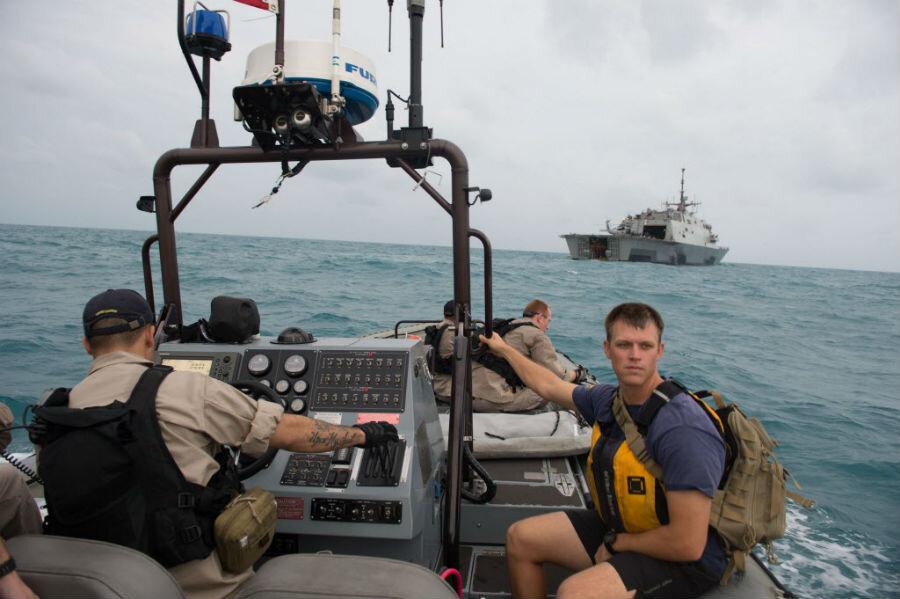Search for AirAsia black box: why US is sending second ship
Loading...
| Washington
Another US Navy ship has joined the recovery effort for the downed AirAsia flight 8501. If recovered, the plane's black box could offer valuable clues for investigators struggling to determine just what went wrong with the airliner.
These humanitarian assistance efforts are an increasingly important part of the US military’s job, as the Pentagon seeks to create bonds in the region that will help pave the way for its strategic shift to the Asia-Pacific.
The US Navy, Marines, and Air Force also played a vital role in relief efforts during typhoon Haiyan last November, for example, in helping mountain rescue efforts and delivering vital food and medical supplies to areas that had been rendered inaccessible during the storm.
This week, the USS Fort Worth joined the USS Sampson in recovery efforts in the Java Sea, off Indonesia’s coast.
Navy divers from the Mobile Diving and Salvage Unit (MDSU) have been using high-frequency towfish sonar systems to map the ocean floor and scan it for wreckage. The sonars can scan a depth of up to 2,000 feet and spot objects as small as a golf ball.
The ships have found bodies of 15 passengers, which were transferred to Indonesian authorities the same day with “the utmost care,” Lt. Lauren Cole, a spokesman for the Seventh Fleet, said in a statement.
The USS Sampson also has recovered airline seats and debris. But, so far, no black box.
“Because the US Navy does so much open ocean searching, we have much better modeling systems of what debris fields will do in the open ocean,” says retired Christopher Harmer, a senior naval analyst at the Institute for the Study of War and former deputy director of Future Operations for the US Navy’s Fifth Fleet.
“This is all part of doing good will,” he adds. “The US Navy is built as a war-fighting organization, but it’s very easy to repurpose into a humanitarian effort.”
“This builds good will – and in addition to that, it’s in everybody’s best interest to find out what happened.”
Did severe wind break off the plane’s tail, for example, or did it fly into such a heavy rainstorm that the engine flamed out? “Or did the pilot become so disoriented that he got vertigo and inverted?” Mr. Harmer, a retired Navy commander, asks. “It likely crashed because it got into horrible weather, but there are one thousand possible scenarios.”
While there were no Americans on the flight, “Many Americans fly Airbus 320s every day, so if there’s something wrong with this aircraft, we want to find out what it is.”
To figure it out, he adds, “You’ve got to get your hands on the flight data.”
To this end, the US Navy will be searching for the black box, but for political reasons may not actually announce that they are the ones who have come up with it, even if they do.
In the meantime, three helicopters (two from the Sampson and one from the Fort Worth) are working together to conduct both day and night operations.
The helicopters “are critical tools in search operations, as they help expand visual search efforts,” Lieutenant Cole said.
A US Navy supply ship, the USNS Carl Brashear, has delivered food and fuel to both ships, allowing them to stay on station and search, rather than returning to port.







